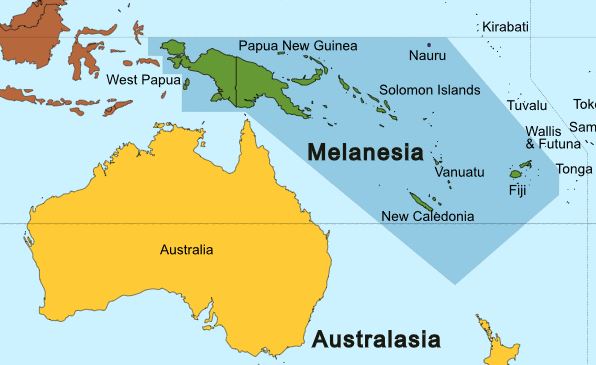|
Syconycteris
''Syconycteris'' (blossom bat) is a genus of megabat in the family Pteropodidae. There are three described species at present, with more likely to be added. Members of this genus are found in Indonesia, New Guinea and Australia. Their diet mainly consists of nectar and fruit, making them important for pollination and seed dispersal in their environment. Syconycteris bats play an especially important role as pollinators for flowers that require an explosive opening such as '' Mucuna macrocarpa''. This is where the stamen and pistill are covered until exposed by an animal. ''Syconycteris'' opens the flower by pushing their snout into the basal section between the banner and carina and then pressing their wings to open. ''Syconycteris'' bats are primary pollinators as the pollen of explosively opened flowers sticks to their fur. Syconycteris is a long tongued nectar feeding bat. They are small compared to other megabats and swarm around tall fruit trees. Like closely related ''Macro ... [...More Info...] [...Related Items...] OR: [Wikipedia] [Google] [Baidu] |
Common Blossom Bat
The common blossom bat (''Syconycteris australis'') also known as the southern blossom bat or Queensland blossom bat, is a megabat in the family Pteropodidae. The common blossom bat feeds mostly on nectar and pollen rather than fruit. It is one of eight Pteropodidae species on mainland Australia. It is one of the smallest of all nectarivorous megabats. Description They are small, weighing only . Body length excluding legs is around long. Distribution and habitat They are found in the Maluku Islands, Salawati, Biak, Yapen, New Guinea, the Aru Islands, the Bismarck Archipelago, Manus Island, the D'Entrecasteaux Islands, the Louisiade Archipelago, New South Wales, New South Wales, Australia, and eastern Queensland, Queensland, Australia. They range from above sea level. They are found in upland tropical rainforests and the Littoral Rainforests of New South Wales. Behaviour They roost singly or in small groups, which makes estimating population based on visual observation diffic ... [...More Info...] [...Related Items...] OR: [Wikipedia] [Google] [Baidu] |
Megabats
Megabats constitute the family Pteropodidae of the order Chiroptera. They are also called fruit bats, Old World fruit bats, or—especially the genera '' Acerodon'' and ''Pteropus''— flying foxes. They are the only member of the superfamily Pteropodoidea, which is one of two superfamilies in the suborder Yinpterochiroptera. Internal divisions of Pteropodidae have varied since subfamilies were first proposed in 1917. From three subfamilies in the 1917 classification, six are now recognized, along with various tribes. As of 2018, 197 species of megabat had been described. The leading theory of the evolution of megabats has been determined primarily by genetic data, as the fossil record for this family is the most fragmented of all bats. They likely evolved in Australasia, with the common ancestor of all living pteropodids existing approximately 31 million years ago. Many of their lineages probably originated in Melanesia, then dispersed over time to mainland Asia, th ... [...More Info...] [...Related Items...] OR: [Wikipedia] [Google] [Baidu] |
Megabat
Megabats constitute the Family (biology), family Pteropodidae of the Order (biology), order Chiroptera. They are also called fruit bats, Old World fruit bats, or—especially the genus, genera ''Acerodon'' and ''Pteropus''—Pteropus, flying foxes. They are the only member of the Superfamily (taxonomy), superfamily Pteropodoidea, which is one of two superfamilies in the suborder Yinpterochiroptera. Internal divisions of Pteropodidae have varied since Subfamily, subfamilies were first proposed in 1917. From three subfamilies in the 1917 classification, six are now recognized, along with various Tribe (biology), tribes. As of 2018, 197 species of megabat had been described. The leading theory of the evolution of megabats has been determined primarily by genetic data, as the fossil record for this family is the most fragmented of all bats. They likely evolved in Australasia, with the common ancestor of all living pteropodids existing approximately 31 million years ago. Man ... [...More Info...] [...Related Items...] OR: [Wikipedia] [Google] [Baidu] |
Syconycteris Hobbit
The moss-forest blossom bat (''Syconycteris hobbit'') is a species of megabat in the family Pteropodidae found in New Guinea. Its natural habitat is subtropical and tropical dry forests. Originally discovered in New Guinea 1911, the moss-forest blossom bat was later discovered in Habema, Tembagapura-Timika, and Lian Jaya, and Indonesia in 1982 by Ziegler. Ziegler described Hobbit on the basis of an adult and subadult gathered from Marobe Province, Papua New Guinea 7'31'' S 146'40' E at an elevation of 2400 m above sea level. In 1990 another was found from high altitude of Forfes near the summit of Mt Kaindi, Marobe Province. The Moss-forest blossom bat is characterized by dark greyish-brown fur dorsally, darkest on its head and nape, with a paler anterior back laterally and a much paler posterior. Irian Jayan bats have dense velvet fur all over their dorsum, but less on venter, being shortest on the front and sides of the head. They possess rusty brown forearms and flanks down to ... [...More Info...] [...Related Items...] OR: [Wikipedia] [Google] [Baidu] |


